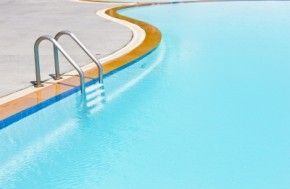
From cracking jokes to business deals, we Indians love talking, and we talk about everything under the sun. Let’s for a change today talk about something as important as life itself – Water. Should we care? We must, each one of us.
These days villagers of Maharashtra, especially Western Maharashtra have a new peculiar morning routine. With a bucket in hand, each villager walks towards the train junctions/ stations and for whatever time the train stops there, they fight amongst themselves to get on and even at time pay the corrupt ticket checkers to get inside. This entire struggle, to fill that one bucket of water. And yes, what water we are talking about here. No this is not the Rail Neer specially packed for us that we proudly sip away whenever we travel. These people struggle to get the water used in train’s washrooms. Imagine the plight.
Now when so much is happening around us, don’t you think it’s time we as individuals contribute in our own capacities before we actually reach a stage when we would either be fighting or paying for water as a luxury item.
Water conservation has had negative connotations for many people because it unintentionally implies hardship and inconvenience associated with it. However, conserving water is not simply a matter of using less water through restrictions. It is about careful management of water supply sources, use of water saving technologies, reduction of excessive demand and many other actions. Water conservation is the responsibility of both water users and suppliers. Both can employ numerous methods to preserve water supplies.
If you thought rainwater harvesting was just a ploy by the government to cover up for its own failures and would yield little or no result, consider the fact that in many areas, ground water abstraction is more than the average annual replenishment. We are drawing out more water that the earth reserves have at a particular level.
Also, just recall the waterlogged streets in several parts of the city and imagine the difference it would have made had it been trapped for use.
In 2001, DJB had asked building owners and builders to maintain harvesting systems.
Vivek Mishra MD and Technical Head, Premium Pools said : “While we are almost near to a serious water crisis, we continue to ignore our carbon footprints. Talking about turning green, one doesn’t really have to forego luxury for that. Achieving sustainability doesn’t mean loss of luxury. And a swimming pool is a vital feature of luxury housing.”
With pools, the only way to ensure happiness is by taking care of durability, comfort and long term cost benefits. This can only be done by choosing the right builder at the onset.
Hardly people in India realize that ideally a pool should never be emptied. In a pool with proper filtration and plumbing, water is changed only a couple of years.
In Indian climate conditions one can consider emptying the pool to harvest rain water. Given that they are built right, pools can help. But a bad pool can leave you helpless.
Rainwater harvesting can be as simple as rain barrels or as complex as underground containment systems. Normally, installation of a system requires consisting of large tanks stored underground that can collect rainwater from the roof and gutters and then filter and pump the water for usage.Such systems are expensive and must be professionally installed. You must have a pump or pressure tank to move the water.
Here is where a swimming pool comes into the picture. Here, you would already have a water treatment mechanism as a part of the plant room that houses the filtration system as well as a balancing tank.
Mishra further adds, “With a pool, if you aim to collect rainwater, you may want to make sure right at the initial stage that the design of the pool is such that the rainwater can be captured and channeled into the settling tanks, filtered, disinfected and used.”
Otherwise, one can consider the annual emptying of the pool during a heavy monsoon season and let the fresh soft rainwater get collected in it. This is the purest form of soft water, low in minerals, contains no chlorine also.
We can say that by the end of monsoon, you may thus have an energy efficient pool running with crystal clear water. The turnover rate of water will be better and you may have to add less chlorine. Overall, it will be easier to maintain the Ph balance owing to the water softness.
But there is also other side to the story, we can use pools as a tool for water conservation but at the same time should look for proper swimming pool maintenance. Proper maintenance can also help to lower water demand. Evaporation is the biggest cause of water loss in swimming pools. The average pool can lose up to one inch of water per week through evaporation. The best way to limit water loss by evaporation is through a pool cover, which can reduce evaporation by up to 95%.
Significant water is also lost from pools through splashing. Ways to lower losses from splashing include diving board removal and lowering the water level in the pool.
Some people, who become deeply passionate for the cause of water conservation, go to the extent of foregoing swimming for a particular season and convert their pool into a rainwater collection tank.














